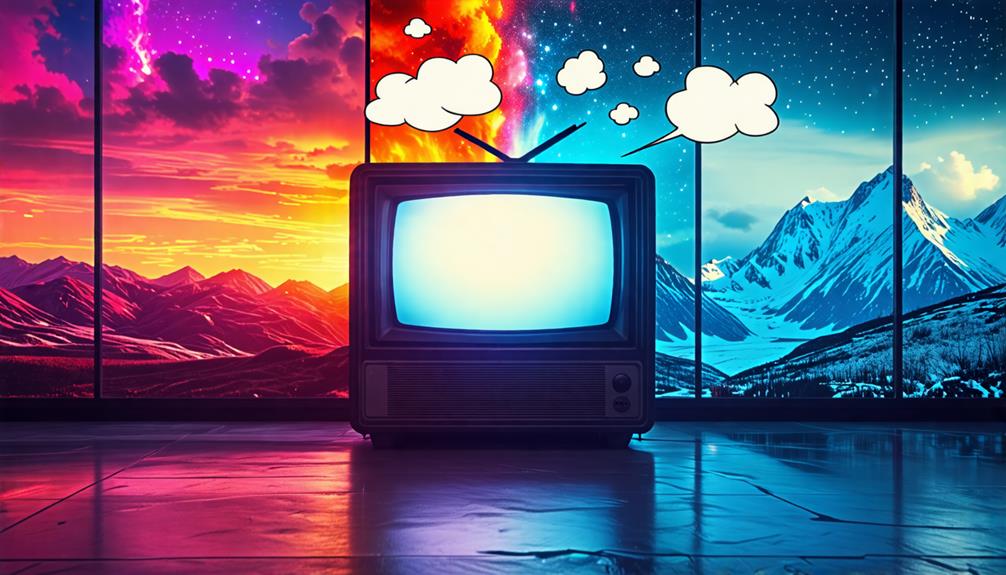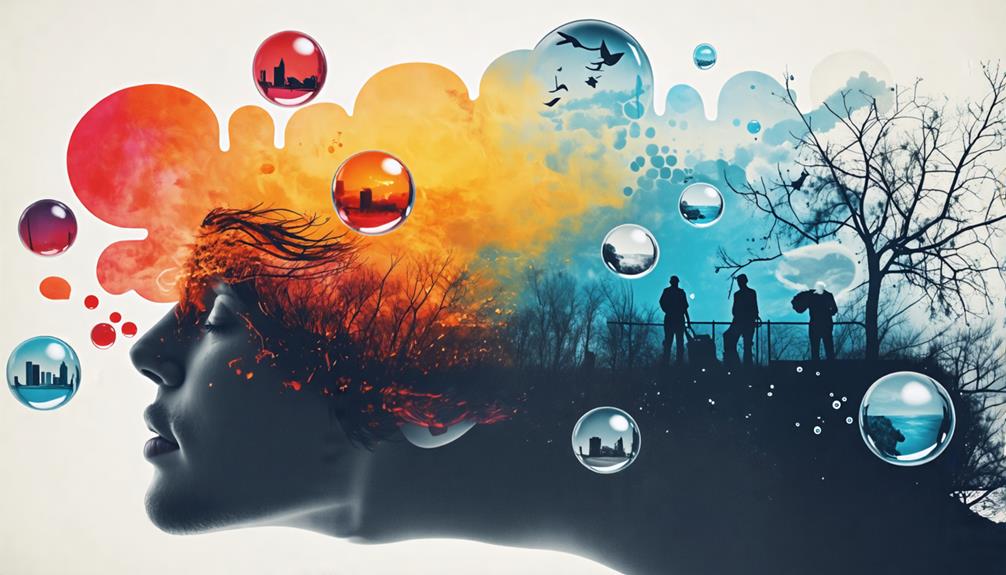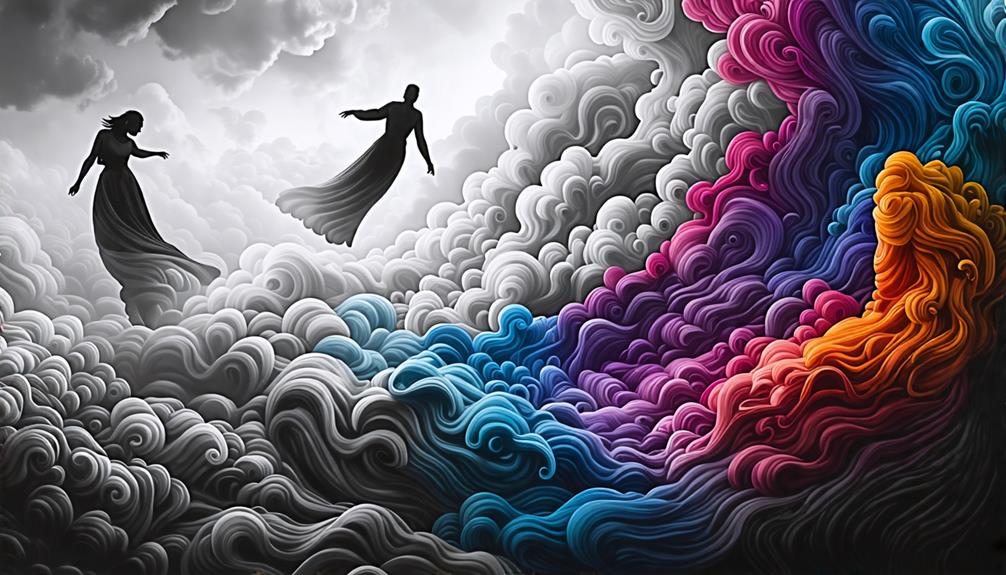Have you ever wondered about the colors in your dreams? You might be surprised to learn that not everyone experiences vivid, colorful dreamscapes. In fact, around 12% of people report dreaming exclusively in black and white. This intriguing phenomenon isn't just a random occurrence; it's influenced by factors such as age, media exposure, and even psychological state. As you reflect on your own dream experiences, consider how they might compare to this subset of the population. What could these monochrome visions reveal about the dreamer's mind, and how might they impact our understanding of human consciousness during sleep?
Key Takeaways
- Approximately 12% of people experience dreams in black and white, while 88% dream in color.
- Age influences dream color, with those over 55 dreaming in monochrome about 25% of the time.
- Early exposure to black-and-white media correlates with a higher likelihood of experiencing monochrome dreams.
- Monochrome dreams don't indicate health issues but may reflect emotional and cognitive processing.
Historical Trends in Dream Colors

Color in dreams has undergone a fascinating evolution throughout the 20th century, with dramatic shifts in reported experiences coinciding with changes in media technology.
In the 1940s, you'd find that about 75% of Americans rarely or never dreamed in color, with black and white dreams being the norm. Historical trends show that early 20th-century studies reported only 20% of dreams containing color, dropping to as low as 9% by the late 1950s.
However, the 1960s marked a turning point. As television technology advanced and color media became widespread, psychological studies revealed a significant increase in dreaming in color. Up to 82.7% of dreams now contained color.
This shift highlights the profound impact of media exposure on our subconscious experiences. Research suggests that exposure to color media before age 11 strongly influences your likelihood of reporting colored dreams.
Age and Media Influence
Your age and media exposure play an essential role in shaping the colors you'll see in your dreams. If you're 25 or younger, you'll rarely experience black-and-white dreams, thanks to your lifelong exposure to color television. However, if you're over 55, you might find yourself dreaming in monochrome about 25% of the time, reflecting a generational change in dream coloration.
Historical data reveals the media's influence on dreaming in color:
- In the 1940s, 75% of Americans reported rarely or never dreaming in color.
- The 1950s and 60s shift to color TV coincided with increased reports of colored dreams.
- Childhood exposure to black-and-white media correlates with a higher likelihood of monochrome dreams.
Studies suggest that your age and the type of media you were exposed to before age 11 greatly impact your dream colors, highlighting the profound effect of early visual experiences on our subconscious minds.
Psychological Implications of Monochrome Dreams

While age and media exposure shape dream colors, the psychological implications of monochrome dreams offer intriguing insights into our subconscious minds. If you're among the 12% of people who dream in black and white, you're not alone. Your monochrome dreams don't indicate any health issues but may reflect your emotional landscape and cognitive processing.
Interestingly, older adults who grew up without color TV are more likely to experience black-and-white dreams, highlighting the impact of media exposure on our psychological experiences. Here's a quick comparison:
| Aspect | Color Dreams | Monochrome Dreams |
|---|---|---|
| Prevalence | 88% | 12% |
| Age Group | Younger | Older (25% over 55) |
| Media Influence | Color TV | Black-and-white TV |
Research into monochrome dreams continues, potentially revealing more about how our minds process emotions and experiences. Your dream colors might just be a window into your unique psychological makeup.
Conclusion
You're part of a unique group if you dream in black and white. It's not just a quirk; it's a window into your mind's processing.
Your age and media exposure play a role, especially if you grew up with monochrome TV. While it's not a health concern, these colorless dreams can offer insights into your emotions and thoughts.
So next time you wake from a grayscale dream, remember you're experiencing a fascinating psychological phenomenon.

Leave a Reply